|
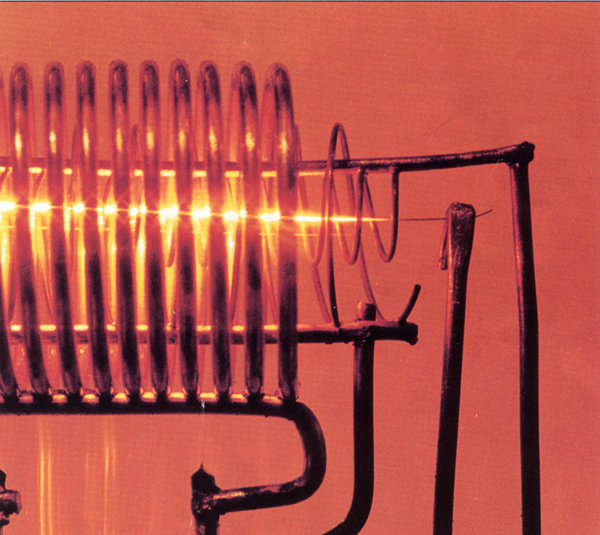
The Thorpe K4
The high amplification factor of the screened tetrode made it one of the most valuable developments in thermionics, and that was so even before the high-frequency version was marketed, when a 'four-electrode' valve, was mainly an audio device. However, the screened tetrode always had a sort of poor relation with much lower amplification factor, that eventually became known as a 'bi-grid'. And these bi-grids seem to have spent not just years but decades trying their hands at this task and that, but hardly ever finding job satisfaction in long-term employment. Not therefore just a damp squib, more like a lead balloon periodically re-inflated by a succession of optimistic fliers, as the following account relates.
In the 1920s the terms 'double-grid' and 'bi-grid' (French 'bi-gril' or 'bi-grille') came to mean a low-μ 'four-electrode' valve with two control grids. Given relatively coarsely pitched grids, the two grids can control a useful current to the anode, and they may have similar control characteristics.
Such bi-grids are unlike the majority of tetrodes, which are high-μ, and which pass useful currents to the anode only when the outer (screening) grid has a considerable positive bias. Unlike later multi-electrode mixers, such bi-grids have no intentional screening between the two control grids, which limits their performance as HF mixers to relatively low radio-frequencies. Although bi-grids were sold over a period of about 30 years, with at least 50 different type numbers, relatively few types seem to have survived. Over a few months I've noted 10 of these type numbers spread over 5 different valve collections, and must assume these few the more successful survivors in Britain:
To this list I should add two other survivors, the American #49 and the Lissen PT225, which fortuitously have characteristics fairly close to those of intentional bi-grids. The 49 was by intent one of four configurable valve designs, being sold as a 2-volt output valve which could be used as either a low-μ triode or a high-μ triode by appropriate disposition of the two grid connections.
Not so the PT225, which was sold as a pentode without any suggestion that (as a pseudo bi-grid) it was unlike any other pentode in the catalogues of the time. Could it be that Lissen naively thought that an output pentode was just a bi-grid with a suppressor grid added? If so, that's an excusable error; for, suppressor apart, the characteristic difference in construction is really one of degree, in the pitches and positions of the two grids. Note that, in the Thorpe K4 the pitch of the outer grid is even larger than that of the inner grid, as can be seen from the photo at the top.
The Early History
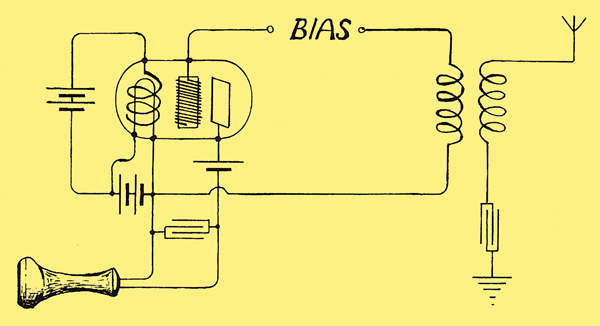
Langmuir's 4-electrode valve of US Patent 1,558,437 filed in 1913, configured as a bi-grid detector with 'space-charge' grid positively biased. Having the other grid of fine pitch suggests that it might have worked better in the screened-grid configuration of its successor, the 'Pliodynatron'. The circuit shown here has been revised from Langmuir's Figure 5 to agree with his text, and therefore no longer has the obvious error of the original.
Clearly the traditional HF screened-grid valve of the late 1920s, where the screening-grid screens so well that it is only just pervious to electrons, is poles apart from a bi-grid with a coarsely-pitched outer grid. This was perhaps not appreciated at the outset; for while the text of Irving Langmuir's 1913 patent [1] I Langmuir: US Patent 1,558,437 filed 29 October 1913. seems to suggest that he was inventing such a bi-grid valve, and a circuit diagram above shows inner grid positive-biased and outer grid as signal grid, a representation of the valve itself suggests the outer grid to be closely pitched, a high-μ feature. This valve probably evolved into Hull's 1917 GE 'Pliodynatron'. Were these the first American screened tetrodes in all but name?
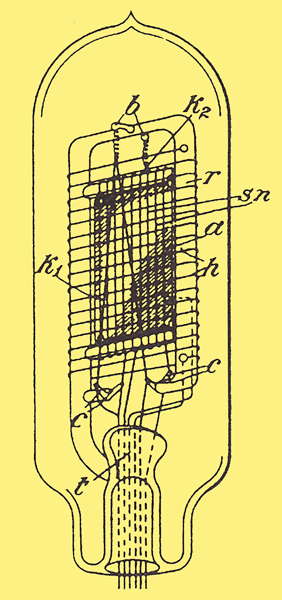 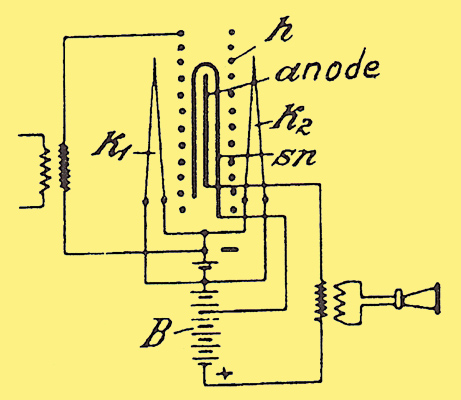
Schottky's 1916 inside-out 4-electrode valve of US Patent 1,537,708 filed in 1919. In the circuit diagram the valve is configured as a tetrode audio amplifier, with positive supply to a not-very-finely pitched screening-grid 'sn'.
Walter Schottky covers very similar ground [2] W Schottky: Four of his German patents 1915 to 1917 covering bi-grid and tri-grid valves are listed in Tyne (qv) pp 266- 7. in his 1916 patent for a tri-grid valve, and is usually credited with the invention of the (audio) screened tetrode above. According to Tyne [3] G F J Tyne: Saga of the Vacuum Tube, Sams, 1977, 245., Germany made bi-grid valves also during World War I for use as line terminal amplifiers; and Schottky's 1919 paper [4] W Schottky: Archiv fiir Electrotechnik 8 (1919) 300--328. has a diagram in which the pitch of the inner grid is coarse, and that of the outer grid even coarser.
To Langmuir [1] I Langmuir: US Patent 1,558,437 filed 29 October 1913. must also go the honour of introducing the theoretical concept that one could reduce or even eliminate the electron cloud (space charge) in a bi-grid valve, by running it with the inner grid at a positive potential. Elimination of space charge may seem a naive proposition for a device which inevitably has some distribution of electrons throughout its volume. Perhaps it would have been better had he suggested solely an advantageous change of the electron distribution. But the idea of space charge elimination persists through much of the later literature, even after the 'virtual cathode' suggestion appeared. A substantial proportion of the published bi-grid circuits have a positive potential applied to the inner grid. Such electrons as are not collected by the inner grid, but pass through its mesh, find the outer grid then functioning as the bi-grid's control grid; and it is sometimes alleged that the performance is thereby superior to that of an inner control grid.
Applications
It has to be said that there is probably no performance figure that a bi-grid can achieve as signal detector or audio valve that could not have been achieved by a well-designed triode. Nevertheless, the Germans continued to develop and use the bi-grid valve. To name but three of the dozen or more German type numbers I have noted from various sources:
In other countries however, the bi-grid was less of a lasting success, though not for want of trying. One can summarise a few of these exercises as follows:
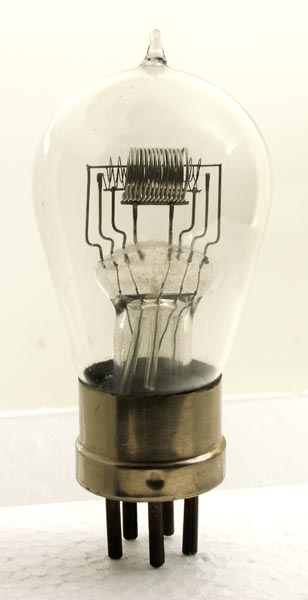
The Thorpe K4
A: The Thorpe K4 valve was associated with the Unidyne domestic receiver [8] I L Sanders: Radio Bygones No.19 (Oct/Nov 1992) 21-24., which took its anode supply from the filament battery. The Unidyne seems to have aroused little enthusiasm in '20s listeners to the wireless. The exercise has however left the world a valve curious for its helical wire anode (see photographs) and unique 5-pin base, and therefore much prized by collectors. There is also some interest in the little book by one Goddard, The Four Electrode Valve, published by Mills and Boon (!), which omits to give readers any specific type numbers of valves which should be used in its numerous circuits.
B: The MOV equivalent to the Thorpe K4 was presumably the FE3, which had a conventional sheet-metal anode. As a low-μ bi-grid it may therefore have had very little in common with the FEI and FE2, the four-electrode valves with relatively fine screen meshes, made to be used in a Marconi reflexed amplifier/detector circuit designed by Round.
With the advent of thoriated filaments, the DE7 took over from the FE3, and was succeeded in turn by the Gecovalve BG4 (though not in Britain) and the MOV DG2 with oxide-coated filaments. According to Dowsett the DE7 was used in an auto-alarm receiver as a final stage relay control valve. He lists data for both FE3 and DE7.
Both Mullard and Philips produced similar sequences of double-grid/bi-grid valves, that to a large extent paralleled the MOV ones; but again the applications of the earlier types seem now to be shrouded by the mists of time:
- Tungsten
- Mov FE3, Philips Q/D6 B6, Mullard DG
- Thoriated
- Mov DE7, Philips A141 or A341, Mullard DEDG
- Oxide
- Mov BG4 DG2, Philips A441 A241, Mullard PM4DG PM1DG
C: This proliferation of valves may have been due in part to the potential use of bi-grids as superhet mixers. Though much of this phase of bi-grid work seems to have been French, I gather that a few receivers did appear on the British market:
- Edison-Bell 459- 5-valve portable (used DG2)
- Rees-Mace 'Gnome' -4-valve (no details)
- Burgoyne 'Silver Seven' -7-valve (41MDG used)
No doubt the bi-grid of 60 years ago worked well enough as a mixer at low radio-frequencies, as did the self-oscillating frequency-changer using a conventional screened tetrode [9] A T Witts: The Superheterodyne Receiver, 6th ed., Pitman 1944,92-95.. But both were eventually supplanted by 'proper' mixers, containing appropriate screening between control grids, that would work well at much higher frequencies.
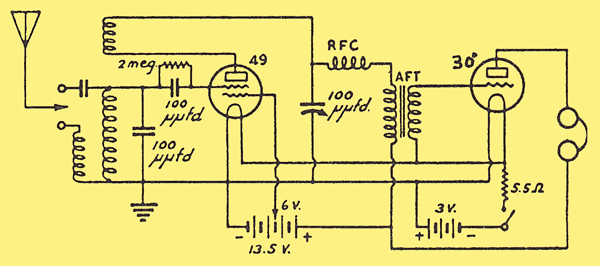
D: While continuous improvement in filament economy offered a choice of such bi-grids as the PMIDG, 210DG, DG210 and the configurable tetrode 49, the low anode-voltage receiver reappearing in 1935 (but this time in the USA) used the #49 as its leaky-grid detector [10] Roy Usher: QST (Oct 1935) 53-54.. Also described as a 'midget portable', this 2-tuber, above, used 3 volts of dry cells (For the meagre anode currents required for leaky-grid detection and headphone drive, I have found the filaments of both #30 and #49 tubes have ample emission when fed from a 1.4 volt supply.) for the filament supply. And that was augmented by an additional 13= volts of dry cells for the anode supply, perhaps in order to get a useful detector gm as well as some kind of output from the #30 audio tube.
E: Without any substantial change, though with the anode supply cut to 6 volts, the #49 detector circuit was then repeated by a New Zealand electrical retailer, 'The Lamphouse', in their organ The NZ Radiogram which promoted the 'Hiker's One' as a kit in 1937, importing the #49 valves for resale. Variations were developed and, unlike the Unidyne, the 'Hiker's' was popular for some years [11] P M Lankshear: Discovering Vintage Radio, Electronics Australia, 1992,42-44.. Even much nearer today [12] P I Martin: Historical Radio Society of Australia Newsletter 1984, October, 3-4. it catches the imagination of Antipodean enthusiasts; while the Unidyne, after reappraisals in 1946 [13] W Nimmons: Practical Wireless June 1946, 291-293 (and see also RB No.20 'Letters' 31, Sir D Hall). and 1975 [14] David Read: BVWS Bulletin 2 (1977),8-9., has now sunk [15] P M Lankshear: loc. cit. Orpheus Radio, Ballarat, back cover advertisement. to being simply a label on an Orpheus 1-valve kit of conventional kind.
Assessment
A more recent reappraisal [16] Pat Leggatt: The Unidyne, 'Popular Wireless First Damp Squib' (private communication). using a French bi-gril valve in a Unidyne original circuit, again makes it clear that the deficiencies arising from low anode voltage are by no means compensated by the use of a bi-grid. But in comparing the later bi-grids myself with selected low-μ triodes in both detector and amplifier circuits, I do find triodes a little less economical in filament current and a little more likely to produce audible distortion.
Distortion tends to be minimised by using a high value of grid leak for biasing, not less than 2 MΩ in a leaky-grid detector and even as much as 10 MΩ for biasing an audio-amplifier grid circuit. And variable positive bias on the bi-grid's inner grid not only serves to optimise the performance of any individual valve, but also can be used as a 'gain' or reaction control to a small extent:
Effect of Changing g1 Bias on a Cossor 210DG
Vg1 |
Ig1 |
Ia |
gm |
μ |
ra |
|
μA |
μA |
|
|
Ω |
2.8 |
150 |
300 |
0.13 |
2.65 |
20,400 |
4.6 |
520 |
520 |
0.34 |
2.4 |
7,060 |
To provide the numbers from which conclusions can be drawn, I made measurements of gm μ and ra at audio frequencies on a few bi-grids, using the outer grid as control grid with zero bias voltage, a variable positive bias on the inner grid, 1.4 volts on the filament and 9 volts on the anode, all supplies being regulated.
Range of Parameters Experienced in Other 'Bi-grids'
|
Vg1 |
Ig1 |
Ia |
gm |
μ |
ra |
|
|
μA |
μA |
|
|
Ω |
PT225 |
2.75 |
700 |
350 |
0.5 |
3.5 |
7,000 |
DG2 |
3.4 |
440 |
440 |
0.445 |
4.0 |
9,000 |
DG210 |
6.7 |
830 |
415 |
0.4 |
4.5 |
11,250 |
#49 |
4.25 |
350 |
175 |
0.23 |
4.4 |
19,130 |
DE7 |
7.6 |
430 |
450 |
0.19 |
4.45 |
23,400 |
My figures show that the bi-grid at low anode voltages achieves much less than the gm of around 2mA/V commonly available from small directly-heated triodes used at more normal anode voltages. Moreover, similar measurements that I made at low voltages on small power triodes of comparable vintage, shows that they too have a very similar range of low gm values to the bi-grids in the above tables, though not always with quite such economy in filament current. The 210DG, DG210 and #49 are economical in filament current, where that is a prime objective in a low voltage receiver using old valve types.
To assess bi-grid performance as a leaky-grid detector, I made similar measurements with the audio signal modulating a carrier. The measured parameters for bi-grids were again lower than one might expect, but entirely comparable with the range of detection parameters shown by triodes at low voltages. I wonder, in retrospect, why there was such a desire in the devisers of the Unidyne to eliminate the HT battery, when one might expect sufficient voltage and current from two or three grid bias batteries to get a better gm and a livelier detector from some contemporary triodes, and perhaps also more filament economy than the Thorpe K4's 0.42 Amperes.
With hindsight a more potent bi-grid implementation obviously lies in reference [10] Roy Usher: QST (Oct 1935) 53-54., with a very economical #49 filament and a total of 16.5 volts for anode supply. Today one might even surpass that with careful choice of 'modern' pentode. But that is another story.
And... ?
As early as 1930, Pidgeon and McNally at BTL found from measurements [17] Ha Pidgeon & Jo McNally: Proc.IRE 18 (1930) 273-279. RB that bi-grids had no particular advantage over triodes as telephone amplifiers. There was, it is true, some development of bi-grids at various times in the USA, the Solodyne and the Wunderlich tubes and perhaps the UX222, the later 'power' tetrodes NU2160 and 12KS, and the sub-miniature CKSI0AX. But their story is probably better told by someone with a comprehensive knowledge of the American radio scene. I should allow that the CKSIOAX is not the only multiple bi-grid; and also allow that the addition of indirectly heated cathodes and genuine screening and suppressor grids between outer grid and anode are legitimate extensions of the basic bi-grid arrangements, though not dealt with in this article.
Acknowledgements
I am considerably indebted to a number of friends who allowed me to examine and make measurements on surviving bi-grids, and supplied information in other ways.
References
- I Langmuir: US Patent 1,558,437 filed 29 October 1913.
- W Schottky: Four of his German patents 1915 to 1917 covering bi-grid and tri-grid valves are listed in Tyne (qv) pp 266- 7.
- G F J Tyne1047: Saga of the Vacuum Tube, Sams, 1977, 245.
- W Schottky: Archiv fiir Electrotechnik 8 (1919) 300--328.
- T E Herbert Telegraphy, Pitman, 1941 reprint of 1930 edition, 857-63.
- H J Wilhelmy: Funkshau, 15:2 (Feb.1942) 17-18.
- L Meulstee: 'SUTEL 40', Morsum Magnificat No.15 (Spring 1990), 1-5.
- I L Sanders: Radio Bygones No.19 (Oct/Nov 1992) 21-24.
- A T Witts: The Superheterodyne Receiver, 6th ed., Pitman 1944,92-95.
- Roy Usher: QST (Oct 1935) 53-54.
- P M Lankshear: Discovering Vintage Radio, Electronics Australia, 1992,42-44.
- P I Martin: Historical Radio Society of Australia Newsletter 1984, October, 3-4.
- W Nimmons: Practical Wireless June 1946, 291-293 (and see also RB No.20 'Letters' 31, Sir D Hall).
- David Read: BVWS Bulletin 2 (1977),8-9.
- P M Lankshear: loc. cit. Orpheus Radio, Ballarat, back cover advertisement.
- Pat Leggatt: The Unidyne, 'Popular Wireless First Damp Squib' (private communication).
- Ha Pidgeon & Jo McNally: Proc.IRE 18 (1930) 273-279. RB
Some Data for Bi-Grid Valves
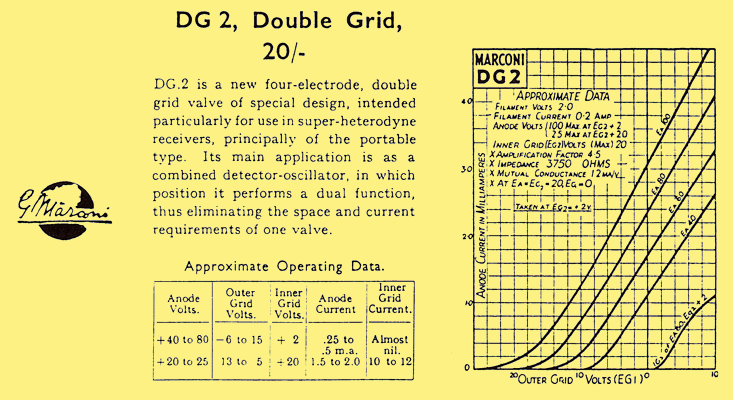
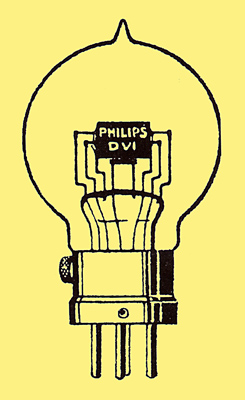
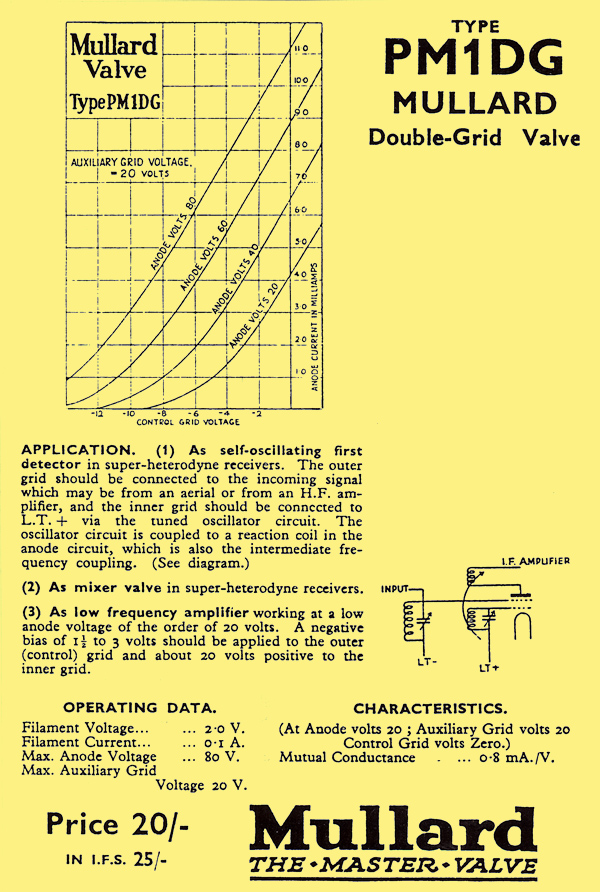
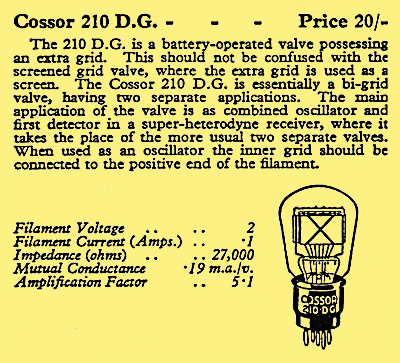
|










